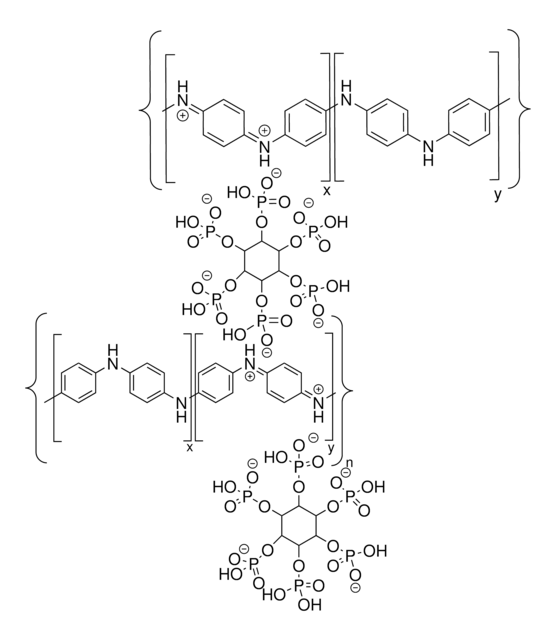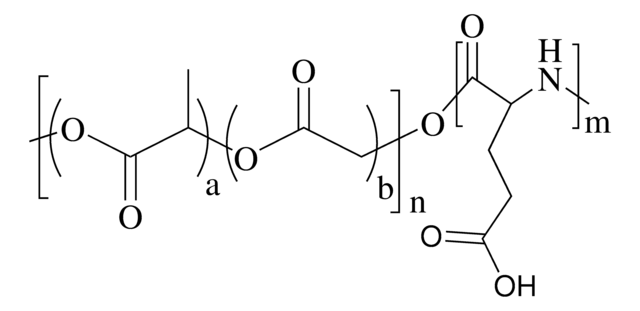推薦產品
描述
Electrochemical activity: see attached CV result
品質等級
形狀
solid
環保替代產品特色
Design for Energy Efficiency
Learn more about the Principles of Green Chemistry.
sustainability
Greener Alternative Product
顏色
black
溶解度
soluble (swell into hydrogel but does not dissolve in water)
環保替代類別
一般說明
We are committed to bringing you Greener Alternative Products, which adhere to one or more of the 12 Principles of Green Chemistry. This product is used in energy conversion and storage, thus has been enhanced for energy efficiency. Click here for more information.
應用
Three-dimensionally cross-linked polypyrrole (3D cross-linked polypyrrole) is a conductive powder made by crosslinking polypyrrole with a dopant molecule - phytic acid. It can form intrinsically conductive hydrogels with a hierarchically porous microstructure. Its porosity promotes transport of electrons and facilitates the diffusion of ions and other small molecules. Its flexibility can also help accommodate the strain caused by volume change during electrochemical cycling. Together with the advantage of high surface area, and biocompatibility, this material provides the feasibility for fabricating flexible, lightweight, energy and bioelectronic devices. Three-dimensionally cross-linked polypyrrole can also been derived into porous carbon nanomaterials via post thermal treatment and activation. The resulted carbon matrix has maintained the hierarchical nanostructure of 3D cross-linked polypyrrole and has been demonstrated as an effective additive to improve energy storage and conversion performance of other electrochemically active materials.
儲存類別代碼
11 - Combustible Solids
水污染物質分類(WGK)
WGK 3
閃點(°F)
Not applicable
閃點(°C)
Not applicable
Graeme S A, et al.
Journal of Power Sources, 196, 1-12 (2011)
Nanostructured conductive polypyrrole hydrogels as high-performance, flexible supercapacitor electrodes.
Shi Y,et al.
Journal of Material Chemistry A, 2, 6086?6091-6086?6091 (2014)
Designing Hierarchically Nanostructured Conductive Polymer Gels for Electrochemical Energy Storage and Conversion.
Shi Y,et al.
Chemistry of Materials, 28(8), 2466-2477 (2016)
Borui Liu et al.
Nano letters, 13(7), 3414-3419 (2013-06-22)
Silicon is considered one of the most promising anode materials for high-performance Li-ion batteries due to its 4200 mAh/g theoretical specific capacity, relative abundance, low cost, and environmental benignity. However, silicon experiences a dramatic volume change (∼300%) during full charge/discharge
我們的科學家團隊在所有研究領域都有豐富的經驗,包括生命科學、材料科學、化學合成、色譜、分析等.
聯絡技術服務





